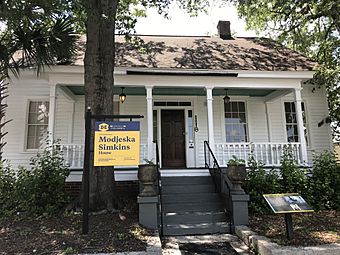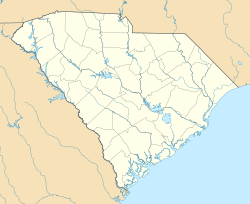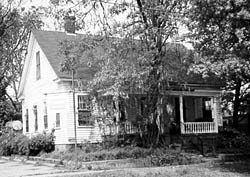Modjeska Monteith Simkins House facts for kids
Quick facts for kids |
|
|
Modjeska Monteith Simkins House
|
|

Modjeska Simkins House, c. 2020
|
|
| Location | 2025 Marion St., Columbia, South Carolina |
|---|---|
| Built | c. 1890–1900 |
| Architectural style | Late 19th And 20th Century Revivals |
| NRHP reference No. | 94000263 |
| Added to NRHP | March 25, 1994 |
The Modjeska Monteith Simkins House is a special historic place important to the civil rights movement. This house, once owned by the famous civil rights leader Modjeska Monteith Simkins, is located at 2025 Marion Street in Columbia, South Carolina. Because of its importance, it was added to the National Register of Historic Places on March 25, 1994.
What the House Looks Like
The Modjeska Monteith Simkins House is a simple, one-and-a-half-story wooden house. It has an L-shaped design and a roof that slopes down on the sides. A small porch with a shed-style roof covers the front. The house still has its original wooden siding.
The house was first built on brick supports, but later, the spaces between these supports were filled in with bricks. The roof is covered with asphalt shingles. Inside, there are three brick chimneys. The top half-story of the house is used for storage.
The windows in the house seem to be the original ones. At the front, there are two double-hung windows on each side of the main door. The front door is made of wood panels and has a small window above it, called a transom, and windows on its sides. The porch covers the door and two of the front windows. The porch has special posts and railings. The steps now have cast iron railings, which replaced the older wooden ones.
Inside, the house has a main hallway in the center. There's a living room and a bedroom at the front. Two more bedrooms are located at the back of the house. Each of these four rooms has a fireplace. The original wooden floors were replaced with pine floorboards. Later, a bathroom was added to the back of the house in the mid-1900s. Iron bars were put on the windows in the 1960s.
Behind the main house, there's another small, one-story building with three rooms. It was likely built around the same time as the main house. This smaller building was probably used as a guest house for civil rights workers who visited Modjeska Simkins.
History of the Simkins House
While some stories say the house was built before the American Civil War, it was most likely built around 1900. The Simkins family moved into the house in 1932.
After Modjeska Simkins passed away in 1992, the house was empty for a while. In 1995, a group called the Collaborative for Community Trust worked to buy the house. They raised money and received grants from different organizations, including the South Carolina State Historic Preservation Office and the City of Columbia. Their goal was to turn the house into a museum about Modjeska Simkins and her important work, and also to use it as their own office. Other groups like the National Trust for Historic Preservation also helped.
Today, the Historic Columbia Foundation manages the house. You can often take tours of the house, and groups can arrange special visits to learn about its history and Modjeska Simkins' legacy.
Why This House Is Important
The Modjeska Monteith Simkins House was more than just a home. It was Modjeska Simkins' residence, her private office, and a safe place for visiting civil rights workers to stay.
One of her most important contributions was her work on the Briggs v. Elliott court case. This case was a big part of the famous Brown v. Board of Education decision. That decision changed history by saying that having separate public schools for children of different races was against the law.
Many important people stayed at the Simkins House. For example, Thurgood Marshall, who later became the first African American Supreme Court Justice, stayed there. At the time, local hotels would not allow African Americans to stay, so the Simkins House provided a safe and welcoming place for him.
A special historic marker has been placed at the Modjeska Monteith Simkins House. It is one of several markers in Columbia that honor important African American historic sites.





